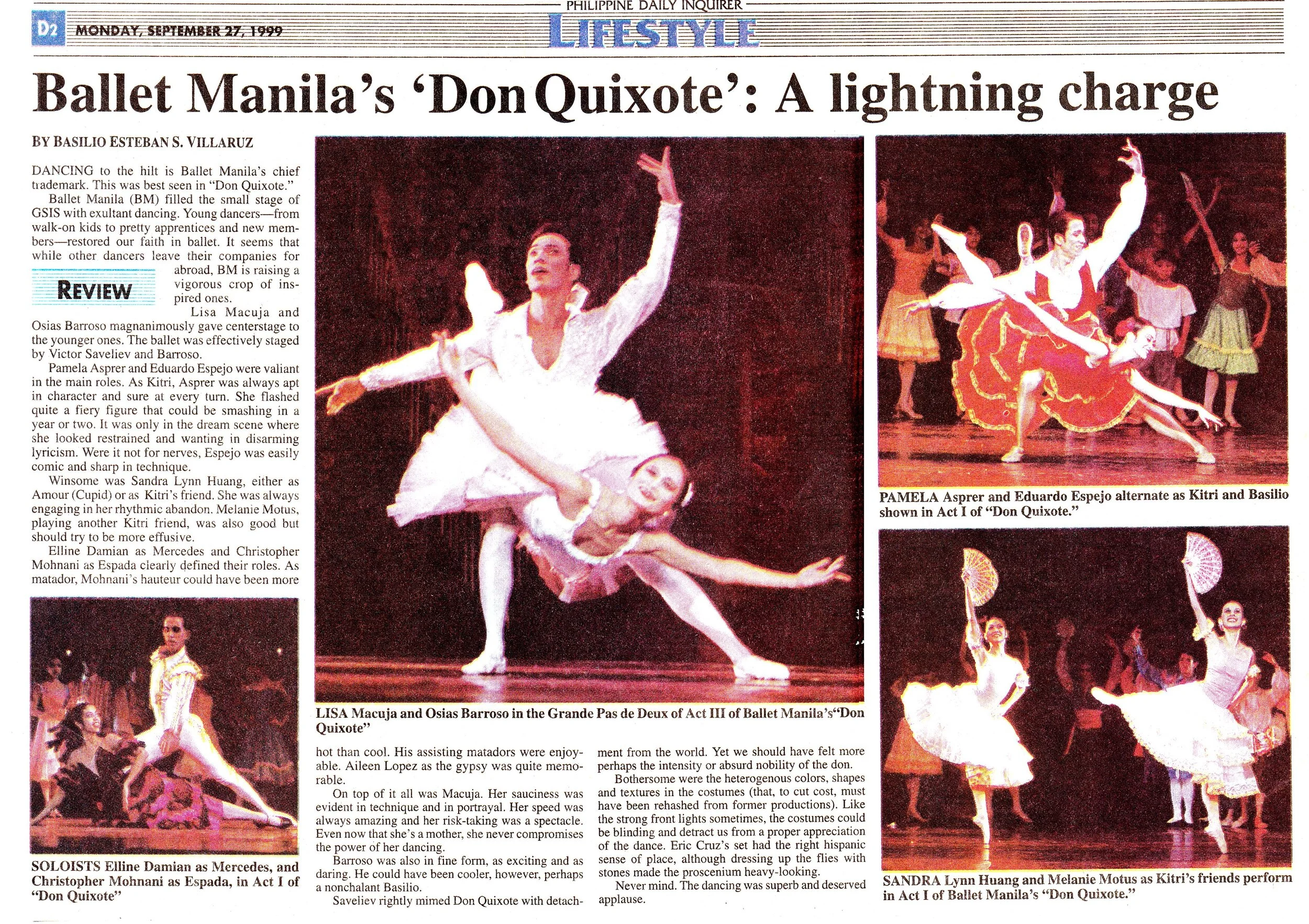This Month in BM History: September 1997
Press release announces Ballet Manila’s show featuring dancers from the Kirov and the premiere of two choreographic pieces. Clipping from the Ballet Manila Archives collection
Ballet Manila wasn’t kidding when it referred to its two-night show in September 1997 as an extravaganza.
A newspaper advertisement for Ballet Manila’s two-night show at the Cultural Center of the Philippines. Clipping from the Ballet Manila Archives collection
As its title Ballet Manila Presents Lisa Macuja with the Stars of the Kirov Ballet indicated, it was a reunion of sorts as the prima ballerina welcomed young dancers from the company that she had once been a part of in Russia.
The Kirov artists – Irina Jelonkina, Elvira Tarasova, Andrei Batalov and Viatcheslav Samadurov – performed the classical pieces Giselle Pas de Deux, Diane and Acteon, Grand Pas Classique, Harlequinade Pas de Deux and Le Corsaire Grande Pas de Deux.
But having the Russians was just one part of the show held at the Cultural Center of the Philippines. It also showcased the one-act ballet Petrushka as restaged by Spanish choreographer David Campos Cantero and a piece by Filipino choreographer Tony Fabella specially created for Ballet Manila.
In Petrushka, Campos came up with his own version of a choreography by Michel Fokine dating back to 1911. Basically a ballet pantomime with a Russian theme and concept, it focuses on the lonely puppet Petrushka (Osias Barroso) who tries to vie for the affection of an Arabian doll (Lisa Macuja-Elizalde) but his love is unrequited as she is smitten with a soldier (Eduardo Espejo). Instead of just focusing on the three principal characters, Campos uses the corps de ballet as a vital and integral part in the development of the story, also taking advantage of the colorful, sentimental, tragic and comic themes of Stravinsky’s music.
Fabella’s Dancing to Verdi – which was his gift to the company “in appreciation of the technical and artistic proficiencies of its dancers” – has since become one of the staples in the Ballet Manila repertoire.
Osias Barroso, a perennial prince on stage, relates what it’s like to dance as a puppet for the first time in a story in BusinessWorld. Clipping from the Ballet Manila Archives collection
Top photo: In Petrushka, Osias Barroso plays the lonely puppet Petrushka who longs for the affection of an Arabian doll (Lisa Macuja-Elizalde) but who is smitten with a toy soldier (Eduardo Espejo). Photo from the Ballet Manila Archives collection






